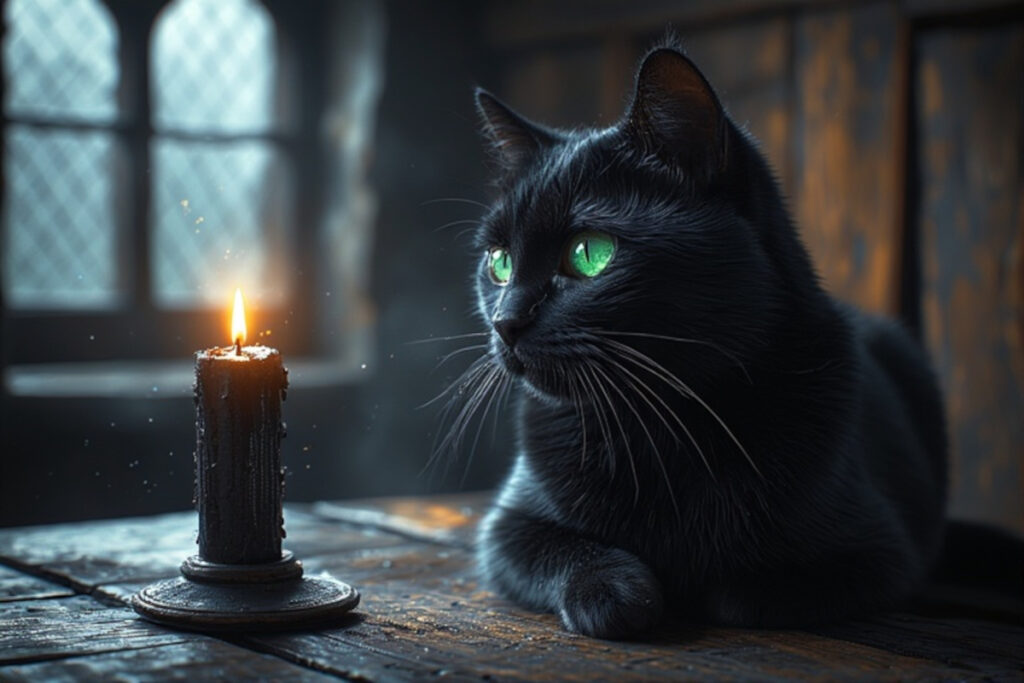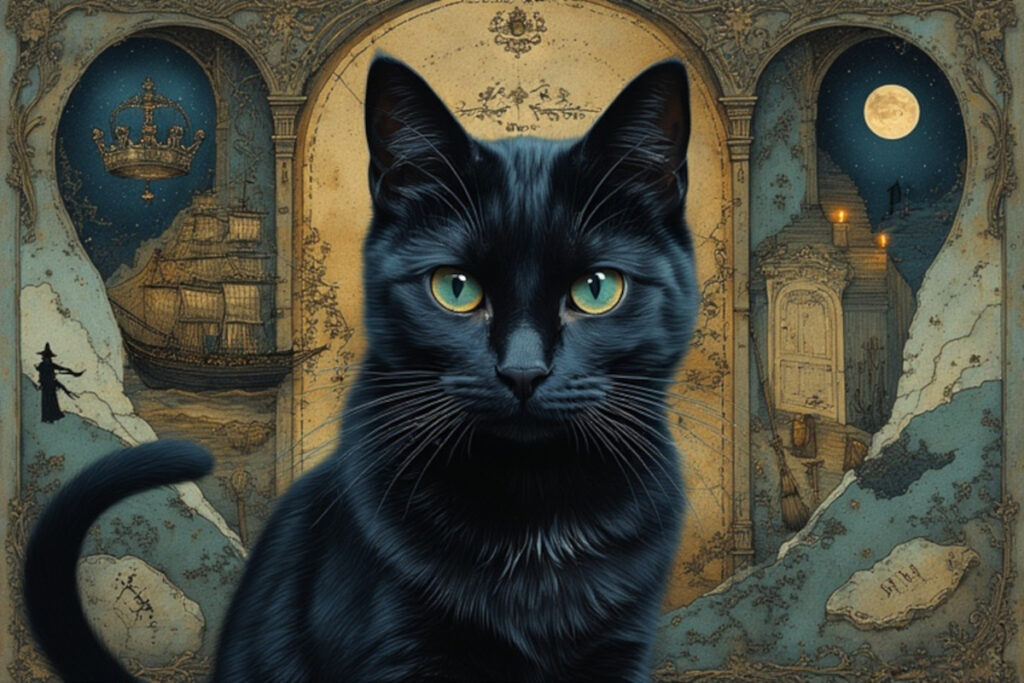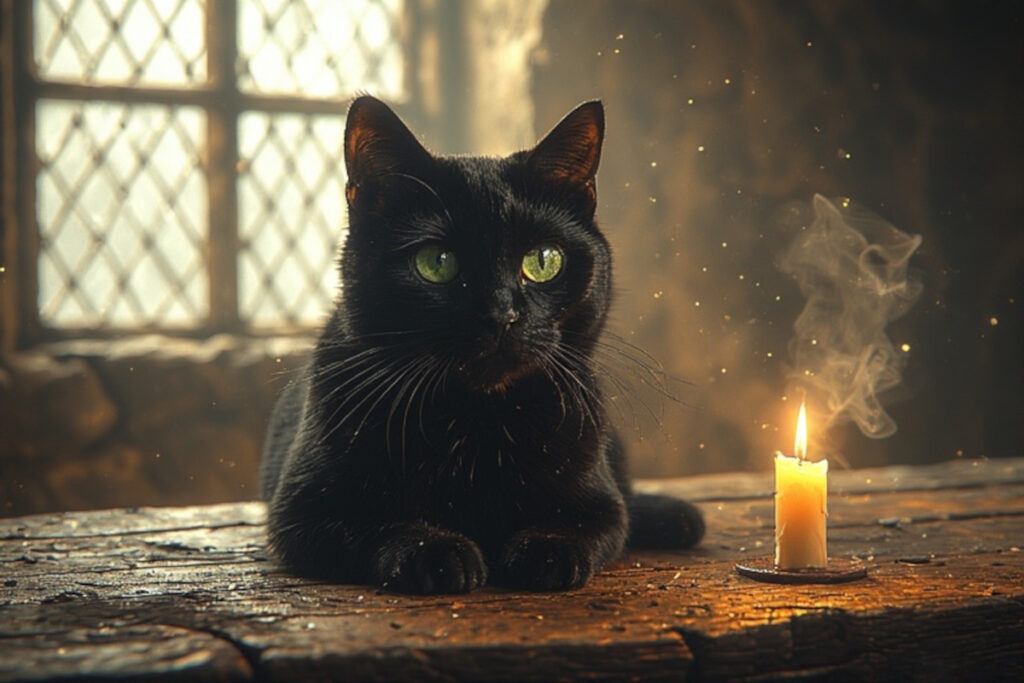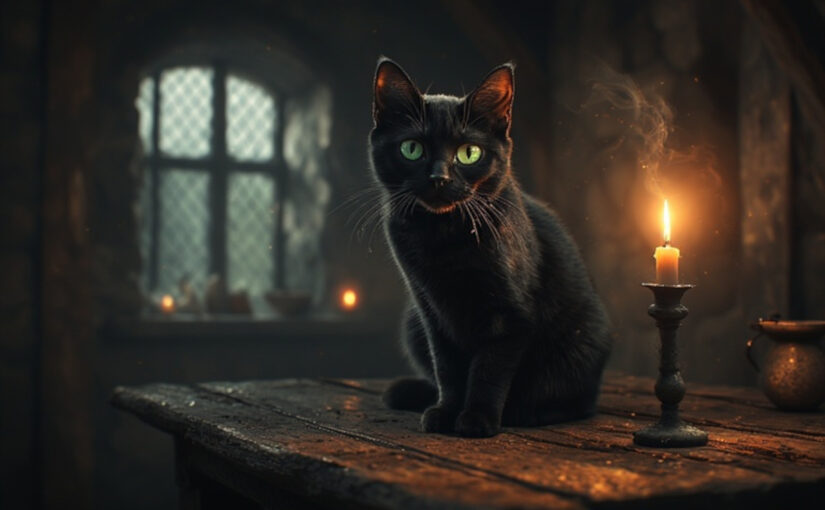Black cats have prowled through human imagination for centuries, embodying a paradox of fortune and fear across cultures. From ancient omens to modern Halloween icons, these sleek creatures with their midnight fur continue to captivate, blending folklore with a touch of the uncanny.
A Royal Feline’s Fateful Shadow
In the turbulent courts of 17th-century England, one black cat held sway over a king’s destiny. King Charles I cherished his ebony companion so deeply that he stationed guards around it day and night, convinced the animal warded off misfortune. When the cat finally perished, the king fell into profound despair, his grief raw and unyielding. Mere hours later, in March 1641, Cromwell’s troops stormed in to arrest him, a chain of events that culminated in his execution two years hence. Whether coincidence or cosmic irony, the tale underscores how black cats could tip the scales of fate in royal minds. This story, whispered through history books, illustrates the deep-seated belief that these animals carried an otherworldly power, capable of shielding or dooming their human charges.
Such notions extended beyond palaces into the realm of art and archetype. The stereotypical Halloween witch, complete with pointed hat and broomstick, owes much to her inseparable black cat familiar. This image crystallized in the public eye through William Hogarth’s 1762 engraving, Credulity, Superstition and Fanaticism. In the print, a caricature of fanaticism unfolds: a witch-like figure clutches her broom, her tall hat casting shadows, while a black cat perches nearby, eyes aglow with mischief. Hogarth’s work satirized the era’s gullibility, yet it cemented the black cat as a symbol of the supernatural, linking feline grace to spells and sorcery. From these artistic roots, the black cat evolved into a cultural shorthand for the eerie, influencing everything from literature to seasonal decorations.

Crossroads of Luck: Global Beliefs in Black Cat Omens
Superstitions about black cats vary wildly by region, revealing how local histories and fears shape interpretations of the same shadowy form. In the United States, a black cat crossing your path remains a harbinger of ill luck, folklore claiming it draws the devil’s gaze upon you. This belief, rooted in colonial-era Puritan suspicions of anything unconventional, persists in rural tales and urban anecdotes alike. Germany offers a nuanced twist: if the cat darts from right to left, misfortune looms, but a left-to-right crossing signals prosperity on the horizon. Such directional lore echoes ancient Germanic traditions, where paths and movements held symbolic weight, much like runes foretelling destiny.
Venturing northward to Scotland, black cats herald abundance rather than doom. Their arrival at a doorstep promises wealth and good fortune, a comforting omen in the misty Highlands. This positive view contrasts sharply with China’s perspective, where black cats foretell famine and hardship, their dark coats evoking shadows of scarcity in agrarian folklore. In Italy, the stakes feel intensely personal: a black cat curling onto a sickbed is seen as death’s gentle messenger, preparing the soul for passage. These beliefs, passed down through generations of Mediterranean storytelling, blend compassion with inevitability.
Ireland, with its rich Celtic heritage, flips the script once more, viewing black cats as lucky charms, especially during milestones like weddings or voyages. Spotting one before a long journey might steady nerves, invoking protection from the island’s ancient spirits. Across the Irish Sea, British sailors wove black cats into their seafaring rituals. They believed these felines blessed ships with safe passage, their presence a talisman against storms. In the 1860s, wives in the coastal town of Scarborough kept black cats to safeguard husbands at sea, turning the animals into prized possessions often targeted by thieves. This maritime affection highlights a practical side to superstition: in an era of perilous voyages, any edge against the unknown was cherished.
Even pirates navigated these waters with caution, though their superstitions carried a sharper edge. Aboard lawless vessels, a black cat boarding and then leaping overboard spelled catastrophe, dooming the ship to the depths. This fear, born from tales of cursed crews, added tension to already treacherous lives. Far from the high seas, ancient texts like the Talmud offer yet another layer: a black cat in the home brings blessings, while its white counterpart invites woe. This Jewish scholarly tradition, dating back centuries, positions the black cat as a domestic guardian, its presence a quiet affirmation of harmony.

The Science Behind the Mystique: Fur, Eyes, and Ancient Fears
What fuels these enduring myths? Part of the allure lies in the black cat’s rare, almost ethereal appearance, a genetic rarity that mirrors albinism in reverse. A coat of pure black is uncommon among felines, demanding a surplus of melanin, the pigment that colors skin, fur, and eyes. More melanin yields deeper shades, from inky black to subtle tabby patterns influenced by other genes; less produces lighter hues or mosaics of color. Total absence of melanin results in albinism, with its ghostly white fur and pinkish eyes, but black cats invert this, their uniformity evoking mystery.
Even rarer is the pairing of jet-black fur with piercing green eyes, a combination that has long amplified superstitious dread. Those large, unblinking orbs, staring from the darkness, seemed to pierce souls in flickering candlelight, feeding tales of witchcraft. Scientifically, eye color hinges on iris melanin: none yields blue eyes, a hallmark of certain breeds; scant amounts produce green, lending an otherworldly glow. Low melanin in the eyes might make black cats appear spectral, their gaze intensified against ebony fur. This biological quirk likely intertwined with folklore, as early observers mistook natural traits for supernatural signs. In dim medieval homes or stormy ships, a green-eyed black cat could easily embody omens, bridging the gap between science and story.

Paws in the Present: Superstition Meets Modern Affection
Today, black cats straddle the line between ancient lore and everyday companionship, their mystique undimmed yet softened by affection. Shelters note higher adoption rates for tabbies over their dark-furred kin, a lingering echo of Halloween biases, but social media brims with tributes to these enigmatic pets. Families share stories of black cats as loyal guardians, much like the sailors’ talismans of old. In a world of rational explanations, superstitions persist as cultural threads, reminding us of humanity’s fascination with the unexplained. Whether crossing paths or curling by the fire, black cats endure as symbols of duality: harbingers of fate, yet beloved for their quiet grace. As we reflect on these tales, perhaps the true luck lies in appreciating the stories they inspire, fur and folklore intertwined.
If you find joy in these tales of twitching whiskers and gleaming eyes, consider helping keep Whiskerito.com alive and purring. Your donation supports thoughtful research, engaging content, and the warm, wonder-filled community that makes this space what it is.
